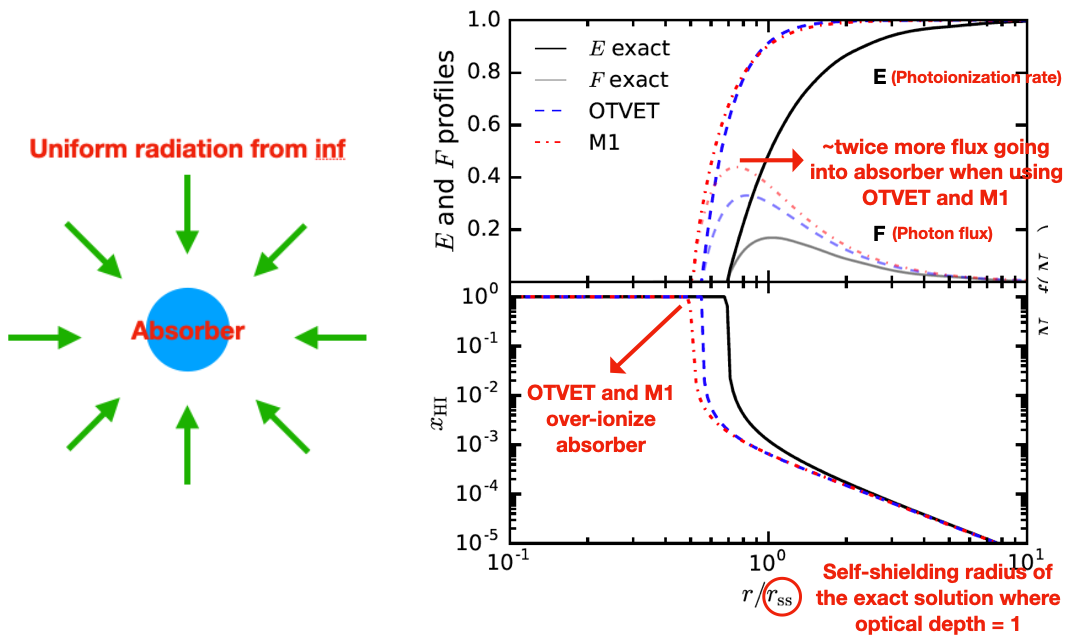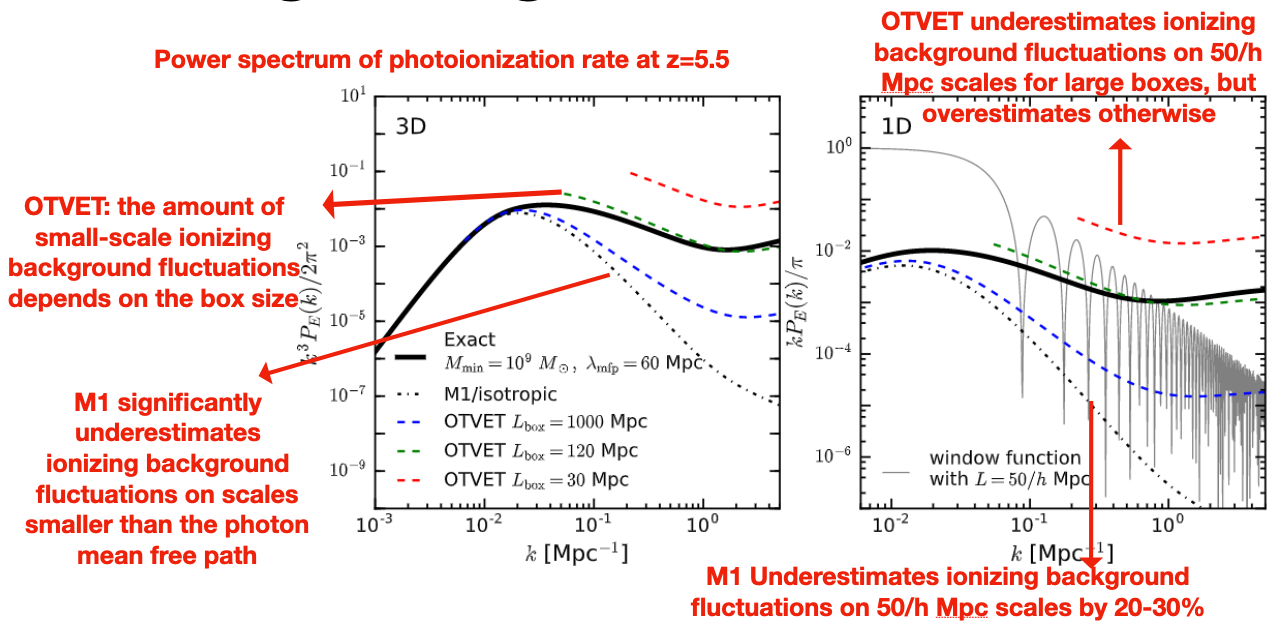Accuracy of moment-based radiative methods on simulating reionization
Most reionization simulations use the moment-based radiative transfer algorithm which introduces unphysical assumptions about the radiation field. These assumptions significantly lower the computational cost but likely cause errors when simulating the post-reionization IGM. While simulations aim to match the Lyman-alpha forest observations, the accuracy of approximate radiative transfer methods has not been studied in detail.
I performed a pen-and-paper calculation of the radiative transfer equation to estimate how the approximate numerical algorithms would err in simulating the post-reionization IGM by designing toy problems mimicking the IGM. I found that moment-based methods over-ionize absorbers of ionizing photons, increasing the required emissivity by ∼30% to balance the higher recombination rate (Fig. 1). I thus showed that reionization simulations are unlikely to match the observed photoionization rate, emissivity, and photon mean free path at the same time. I also found that moment-based algorithms can bias the post-reionization ionizing background fluctuations by tens of percent, while ionizing background fluctuations are the most likely scenario to explain the observed large scatter in the Lyman-alpha forest flux (Fig. 2). As the first one to prove that reionization simulations can significantly bias the level of fluctuations in the simulated Lyman-alpha forest flux, my work acts as a significant warning to the simulation community.


Unfortunately, we do not have a method to resolve the above issues related to the moment-based methods, and we have also found that short-characteristics ray-tracing methods or closing the moment equations at higher orders do not necessarily simulate the ionizing background fluctuations a lot more accurately.